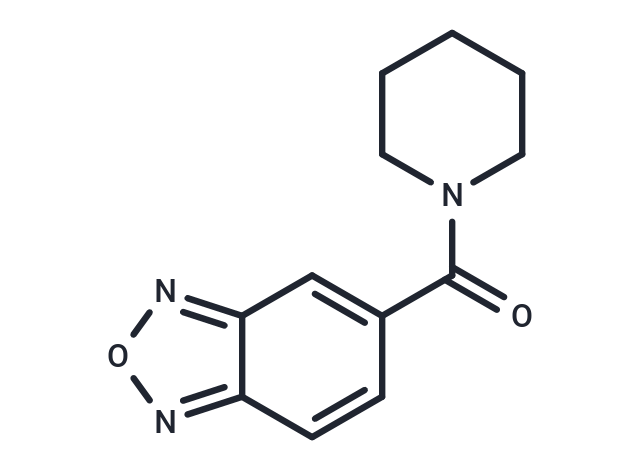Shopping Cart
- Remove All
 Your shopping cart is currently empty
Your shopping cart is currently empty

Farampator (CX-691) (CX-691;Org24448) is a positive modulator of AMPA receptor.

| Pack Size | Price | Availability | Quantity |
|---|---|---|---|
| 2 mg | $29 | In Stock | |
| 5 mg | $48 | In Stock | |
| 10 mg | $68 | In Stock | |
| 25 mg | $143 | In Stock | |
| 50 mg | $248 | In Stock | |
| 100 mg | $369 | In Stock | |
| 200 mg | $523 | In Stock | |
| 1 mL x 10 mM (in DMSO) | $53 | In Stock |
| Description | Farampator (CX-691) (CX-691;Org24448) is a positive modulator of AMPA receptor. |
| In vitro | CX691 attenuates a scopolamine-induced impairment of cued fear conditioning following acute administration (0.1 mg/kg p.o.) and a temporally induced deficit in novel object recognition following both acute (0.1 and 1.0 mg/kg p.o.) and sub-chronic (bi-daily for 7 days) administration (0.01, 0.03, 0.1 mg/kg p.o.). It also improves attentional set-shifting following sub-chronic administration (0.3 mg/kg p.o.). Farampator (500 mg) unequivocally improves short-term memory but appeares to impair episodic memory. Furthermore, it tends to decrease the number of switching errors in the CTMT. Drug-induced side effects (SEs) included headache, somnolence and nausea. Subjects with SEs has significantly higher plasma levels of farampator than subjects without SEs. Farampator has potential in treating disorders characterised by cognitive deficits such as Alzheimer's disease and schizophrenia. |
| In vivo | Farampator holds promise for managing cognitive deficits associated with conditions like Alzheimer's disease and schizophrenia. It mitigates scopolamine-induced cued fear conditioning impairment with a single dose (0.1 mg/kg p.o.) and rectifies deficits in novel object recognition after both acute (0.1 and 1.0 mg/kg p.o.) and sub-chronic (twice daily for 7 days at doses of 0.01, 0.03, 0.1 mg/kg p.o.) administrations. Moreover, farampator enhances attentional set-shifting with sub-chronic use (0.3 mg/kg p.o.)[1]. Notably, at a 500 mg dosage, farampator consistently improves short-term memory, albeit with a tendency to impair episodic memory and reduces switching errors in the CTMT. Reported side effects (SEs) include headache, somnolence, and nausea, with subjects exhibiting SEs displaying significantly higher plasma levels of farampator compared to those without SEs[2]. |
| Alias | Org24448, CX-691 |
| Molecular Weight | 231.25 |
| Formula | C12H13N3O2 |
| Cas No. | 211735-76-1 |
| Smiles | O=C(N1CCCCC1)c1ccc2nonc2c1 |
| Relative Density. | 1.299 g/cm3 (Predicted) |
| Storage | Powder: -20°C for 3 years | In solvent: -80°C for 1 year | Shipping with blue ice. | |||||||||||||||||||||||||||||||||||
| Solubility Information | DMSO: 50 mg/mL (216.21 mM) | |||||||||||||||||||||||||||||||||||
Solution Preparation Table | ||||||||||||||||||||||||||||||||||||
DMSO
| ||||||||||||||||||||||||||||||||||||

Copyright © 2015-2024 TargetMol Chemicals Inc. All Rights Reserved.